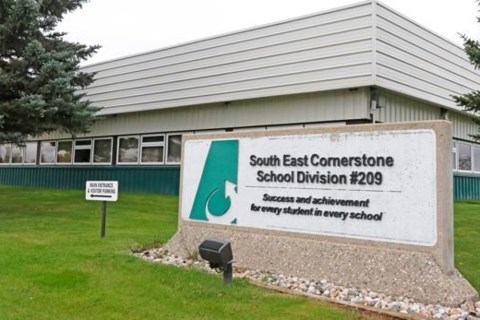WEYBURN - Tracey Kiliwnik brings a wealth of data connectivity and first-hand experience to the table when she is asked to provide details regarding student success rates in the South East Cornerstone Public School Division.
Kiliwnik, the co-ordinator of learning supports for the school division, was a presenter of information that was being delivered to the board members during their Feb. 12 open public meeting in the Weyburn head office.
The main topic was the division’s Monitoring Report No. 3 that calls for collecting information, measuring, delivering and reporting results of their drive toward continuous improvement in the classrooms.
The focus is on collaboration to discuss interventions and supports at three tier levels and then the distribution of these supports, she explained.
The concept is to assess and then provide tiered intervention menus to solve problems, she told the board members.
Universal screening was explained to the board, and that identifies students who may be at risk and identifies the areas of need (group or individual) and resulting progress and growth following appropriate interventions. The universal screening process takes place three times per academic year, she noted.
The screening process includes early literacy and math from Grades 1-9 and various other screens from Grades 4-12. That includes phonological awareness screening tests at the kindergarten level during the early years evaluation processes.
Diagnostic assessments follow to identify root causes and the skills that require more focus. The following monitoring moves provide information on successful interventions and closing gaps while ensuring the monitoring teams can circle back to identify further supports and interventions.
“This allows schools to use their resources within,” Kiliwnik said.
Colour-coded graphs were used to illustrate the co-ordinator’s pathway explanations.
The response to intervention data gathering is done on the district, school and classroom levels, she added with the individual educator being able to review the skills, their levels and progress being made. She used a math graph to show how the system is rolled out.
The student profile is a collaborative form to lead and support conversations throughout the response to intervention process. This assists classroom teachers in making plans for students who may require further support and assessments. A review of cumulative records prior to the start of the school year is recommended since it supports the student profile process, she said. Then, evidence-based documents/data accompanies the interventions and strategies used by the team as part of the action plan.
If the student continues to struggle, Kiliwnik said the matter refers back to the student support team.
Keith Keating, the division’s director of education, said at the conclusion of the presentation that there are lots of processes that may be followed “to get students what they need to be successful.”
Board chairwoman Audrey Trombley said it was heartening to see the enthusiasm of the staff members, the presenters, who delivered the information.





